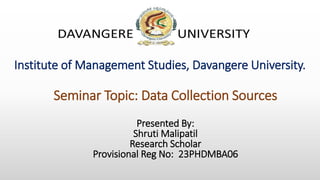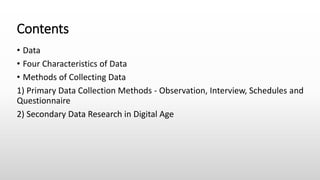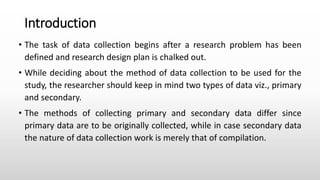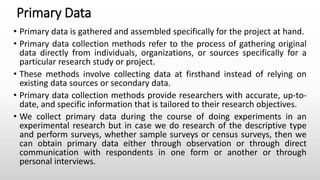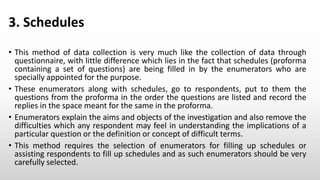The document discusses various methods for collecting primary and secondary data for research purposes. It describes primary data collection methods like observation, interviews, schedules, and questionnaires which involve directly gathering original data from respondents. It also explains secondary data research which uses already existing data collected by others. Some key secondary data sources mentioned include internal organizational records, government data, publications, and electronic databases. The characteristics of useful data like relevance, quality, timeliness and completeness are also summarized.
